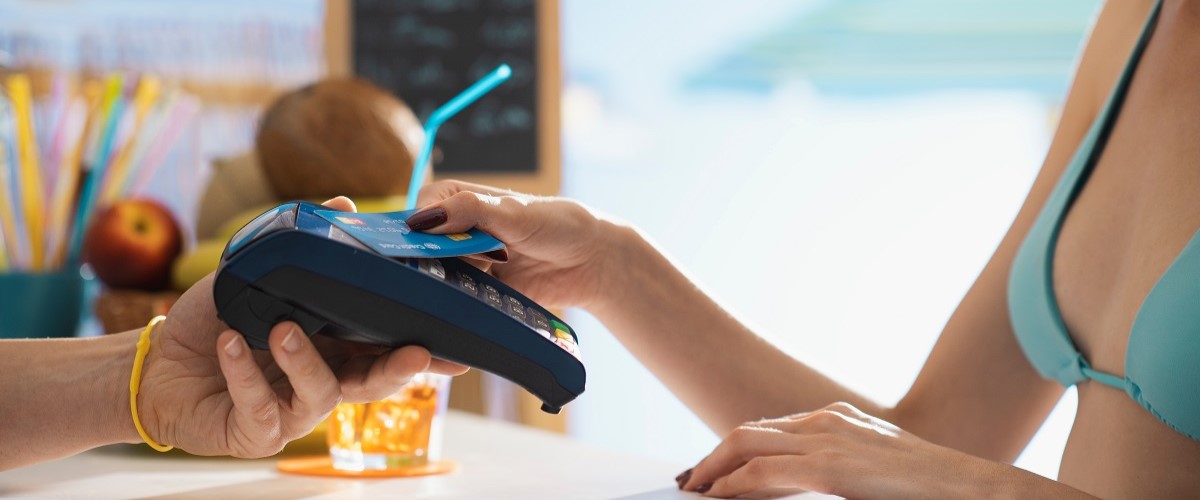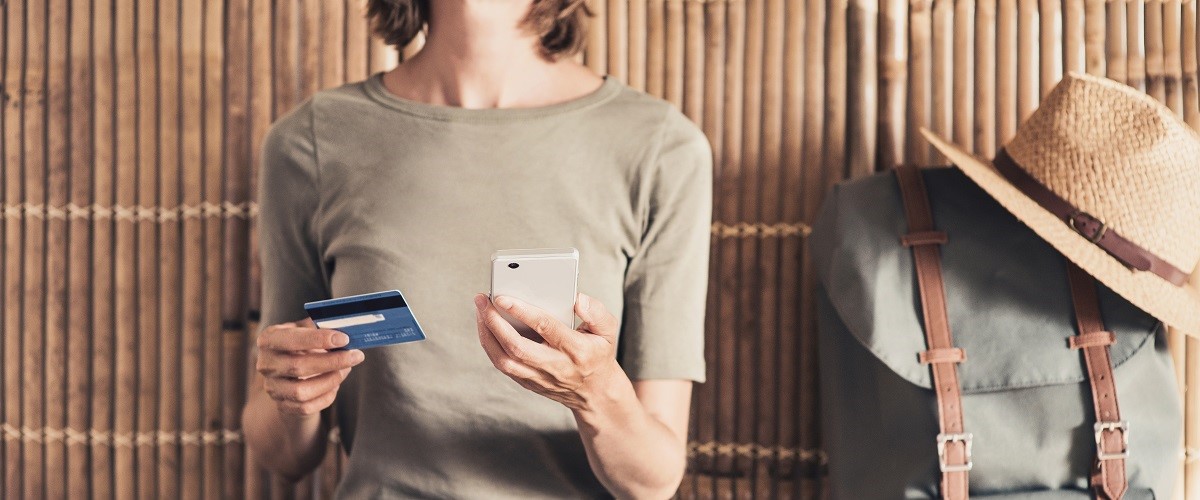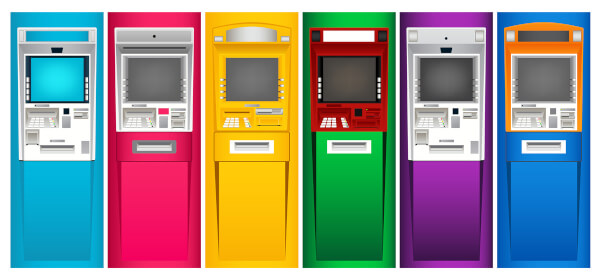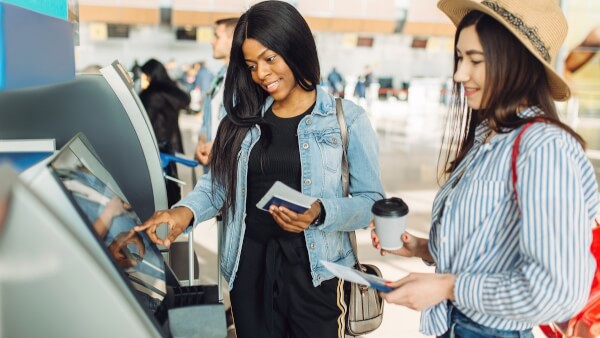Cash or card in Barbados: Which is the best way to pay?
Should you pay with cash or card in Barbados? A handy guide including cash etiquette, Barbadian ATMs and using your UK card.

Planning a trip abroad? Then you’ll need to consider the best way to pay for souvenirs and services while away. Using debit or credit cards abroad is often the most convenient and safe option. Though using cards overseas can get expensive due to fees and charges.
If you’re a Barclays customer, have a Barclaycard or hold a Barclays debit card, then you’ll need to get familiar with fees and how to use your card abroad so that you can make your money go further. That’s why we’ve created this helpful guide.
There’s also an alternative to using your Barclays credit or debit card abroad, the Wise card from the money services provider Wise. It’s not a credit card, but it is an international debit card which allows you to spend in 150+ countries for low-fees*.
Learn more about the Wise card 💳
More on that later, first, let’s look at whether or not you can use your Barclaycard abroad.
Yes, you can use your Barclaycard card abroad to make purchases or withdraw cash at an ATM.
If a retailer has the contactless symbol displayed, then you should also be able to use your contactless card like you do at home.
Some countries, however, haven’t fully adopted contactless technology so you may be out of luck, especially in rural areas.
While you can use your Barclaycard overseas, there may be additional fees to pay.
According to the Barclaycard website, each purchase abroad using your card will cost you an additional non-sterling fee of 2.99%1.
This means it might be more cost effective to withdraw cash from an ATM.
However, a cash transaction fee, also 2.99% (with a minimum fee of £2.99)1 also applies when using an ATM to withdraw foreign currency so you’ll need to work out which option is best for you.
We’ll go into more detail on fees later on, including a comparison table. For now, let’s take a look at using a Barclays debit card overseas.

Yes, you can use your Barclays debit card abroad to make purchases or withdraw cash.
Depending on where you’re travelling most retailers will display the contactless symbol, so you can use your contactless card the same as you would back home.
Again, be mindful that some countries have a lower contactless technology adoption or may even prefer cash as the main form of payment.
Do some research if you’re heading on holiday somewhere off the beaten track, as it might be a good idea to take some cash with you, too.
We’ve got you covered with some popular destination guides to help you work out whether cash or card is a better option:
If you use your debit card abroad for purchases, you will incur fees.
For using your Barclay debit card abroad that fee is 2.99%2.
And it’s not just in-person purchases, the fee is also applied when making cash withdrawals in a foreign currency, and even shopping online on a non-UK website.
If using a foreign ATM, depending on the cash machine provider, there may even be additional service charges.
In some cases, you may have a debit card that offers no fees on non-sterling transactions and withdrawals, but you can still be caught out by foreign ATM providers fees.
Whether you choose to spend abroad using your Barclays debit or credit card, you’re going to incur some fees. There are a lot of reasons why this is.
Firstly, it depends on whether your card is Visa, Mastercard or Amex, as these are companies who process transactions for the bank.
Although your card is issued by a bank, in the case of Barclays, all their card providers rely on one of these three companies to process transactions for them.
Each has a slightly different approach to calculating the currency exchange rate that will be applied to your purchases while you’re away.
You can find out easily which your card uses by looking for the symbol on the card itself but you’ll find a selection of the different Barclays issued cards below.
| Visa | Mastercard | Amex |
|---|---|---|
| Barclays Visa Debit Card | Barclaycard Avios Card | American Express® Platinum Card |
| Barclaycard Forward Credit Card | Barclaycard Avios Plus Card | American Express® Basic Card |
| Barclaycard Platinum 12/20/28 Month Balance Transfer Visa | ||
| Barclaycard Platinum all-rounder Visa | ||
| Barclaycard Rewards Visa |

The differences in rates for international purchases are fairly small and will vary depending on which currency you’re spending in. You can see how your card exchange rate compares to the mid-market rate, using an online currency converter.
If you want to find out more, you can find the daily exchange rates being used between different currencies by Visa, Mastercard and Amex on their websites below:
The handy online tools above will help you work out what you’ll actually be charged on a day-to-day basis if you make purchases abroad using your Barclaycard or your Barclays debit card.
For example, if you spend EUR 100 in a restaurant during a long weekend trip to Paris, and use your Mastercard Barclaycard, the exchange rate applied may have looked like:
Using this exchange rate, plus the non-sterling transaction fee charged by your card provider, you can see that the final bill totalled £88.80. The exchange rate used will fluctuate, of course, so check online tools regularly.
Why not check out our currency converter below, we use the mid-market exchange rate to help you avoid getting hit with higher than necessary fees*.
You can even sign up for alerts to track the exchange rate to make sure you’re getting the fairest rate.
Depending on whether you use your Barclaycard or your Barclays debit card abroad and how you use it, there are generally five different fees at play. Let’s dig a little deeper and explore each of these.
For example, let’s say you have a Barclays Visa debit card. In this case, the bank will apply the exchange rate being used by Visa on that day in order to convert your purchase into GBP.
The fee is based on the Visa exchange rate on the day your transaction was authorised2.
You might notice that there’s a small mark-up added from the exchange rate you find when you search for the currency pair on Google.
This is typical, and these exchange rates are relatively fair if you’re being charged in the local currency. It’s only when you’re charged in GBP that you run into mark-ups, this is called Dynamic Currency Conversion (DCC). But more on that later.
On top of any exchange rate markups, Barclays will then deduct a further cut for itself, which is known as a non-sterling transaction fee, or a non-sterling cash fee2.
Next, if you’re taking cash out of an ATM, there may also be further charges to pay. For a Barclays debit card, if you don’t use a Global Alliance ATM, you can expect to pay a further £1.50 fee4.
Here's a list of cash machines that are part of the Global Alliance ATM network:
| Bank | Coverage areas |
|---|---|
| Bank of America | United States |
| Barclays | United Kingdom, Worldwide |
| BNP Paribas | France |
| Deutsche Bank | Germany |
| Scotiabank | Canada, Guatemala, Mexico |
| Ukrsibbank | Ukraine |
| Westpac Bank | Australia, New Zealand, Pacific Islands |
It’s also worth being wary, as some individual banks or ATM providers might levy their own fees on top of those your bank charges.
Depending on where you’re travelling to, we have some short guides on ATMs, including their locations and potential fees. As a Brit, you’re likely heading to one of these three popular holiday destinations:
Earlier we mentioned Dynamic Currency Conversion, but why should you try to avoid it? Well, DCC can be applied nearly anywhere your card is accepted overseas.
For example, you might be asked if you want your purchase at an ATM, restaurant or store to be processed in GBP instead of the local currency wherever you are. Often, this is touted as a convenience, but it should most definitely be avoided. But foreign currency exchange rates using DCC are never as good as those your card provider will give you.
Your bank has an interest in ensuring you’re happy with their services. A foreign provider, whether a local business or ATM provider, however, has no such obligation and will happily mark up an exchange rate so they can pocket the difference.
These providers use their own, mostly poor, exchange rates so you’ll be unnecessarily paying more than you need to for holiday purchases.
If you’re covering your holiday spending with your Barclaycard credit card, the process will be similar. However, you’ll also have to take into account any interest charges you might incur if you don’t pay your bill at the end of the month.
Some credit cards do come with promotional offers which could mean that you have a grace period during which your purchases are interest-free. And the exact fees you’re liable for will be available online or on the back of your card statements.
The below comparison table is a rough guide, as different card types will vary slightly to include promotions and opening offers which may improve the rates available.
Here are the fees you'll be charged to use your credit or debit card while you’re away:
| Transaction Type | Barclays Debit Card2 | Barclaycard Credit Card (Visa)1 | Barclaycard Credit Card - (Mastercard)1 | Barclaycard Credit Card (Amex)5 |
|---|---|---|---|---|
| Purchases / Non-sterling Transaction Fee | 2.99% (or 2.75% for Business Banking customers)6 | 2.99% | 2.99% | 2.99% |
| ATM Withdrawals / Foreign Cash Fee | Non-Sterling Transaction Fee plus £1.50 if not using a Global Alliance ATM4 | 2.99% | 2.99% | 3% of withdrawal amount or £3 (whichever is greater) plus non-sterling transaction fee5 |
📚 Read more: Barclays Travel Wallet
It’s a nightmare scenario, but it’s worth thinking about how you’ll cope if your card goes missing somehow when you’re on your holiday.
If you lose your card when you’re abroad, you must contact either Barclays Bank, or Barclaycard as soon as you can to report the loss. In both cases, they’ll cancel the card and may be able to issue you a temporary card or some emergency funds to tide you over while you’re away.
You can do this via the app, by phone or online. Below are the 24/7 contact numbers you’ll need:
Barclaycard7
Barclays Bank8
You can also get card protection insurance which could offer additional help if your card is lost or stolen while you’re abroad. However, this will come at a fee. Card protection can be arranged through your bank or by using an insurance company. If you do take this additional protection, make sure you have all your policy details with you when you travel - just in case.

Your personal preferences and spending habits will dictate whether it’s best to use a debit or credit card abroad.
✅ Debit card pros:
⛔ Debit card cons:
✅ Credit card pros:
⛔ Credit card cons:
It’s well worth having a secondary bank card just in case there’s a problem with your main card such as theft, loss or damage. Also, if your bank does note anything suspicious they may restrict or limit your card. Having a backup card on hand will help to avoid this.
By now, you will know that it’s always best to pay for purchases and withdraw currency from ATMs in the local currency to avoid unnecessary fees.
Like you would at home, take care at ATMs, and be mindful of your surroundings. Your safest best bet is to use an ATM in a bank.
Monitor your purchases on the Barclays app and while you’re on holiday adjust your settings to include push notifications if you don’t already have them setup. You’ll receive a notification anytime money enters or leaves your account so you’ll know exactly what you’re spending and will be alerted to anything suspicious. Another bonus of tracking spend is that you’re less likely to overspend.
In the Barclays app, you can also turn off in-store international spending to prevent your card being used abroad for extra safety9. Simply select your debit card in the app followed by ‘In-store international spending’ and toggle the switch on or off.
Keep a bit of cash on you at all times, too, in case you find vendors and stores that don’t accept cards. For example, in some lesser known Greek islands or rural areas cash is preferable as card adoption is lower.
Of course, this may seem obvious, but always keep your cards and cash close to your person, ideally in a purse, wallet, phone case or even a money belt that you can strap to your waist.
No, there’s no need to inform your bank when you travel abroad though they may contact you via mobile while you’re away if they spot anything suspicious, so always make sure your contact details are correct before you leave the UK.
If it’s wrong or you have your phone turned off while you’re abroad, you risk having your account activity limited while they make further checks.
And if you are taking a longer holiday or will be out of the country for a large chunk of time, it might be best to let the bank know in advance.
Your holiday is no time to worry about money. So, use these tips and make sure before you leave which method of payment is going to be best for you. That way, all you have to do is relax and enjoy!
Alternatively, why not open a Wise account or treat yourself to a Wise card? With the Wise card, you’ll never have to worry about exchange rate markups, or high transaction fees* whenever you spend abroad.
And you can use it to withdraw cash from ATMs for free up to 200 GBP in 2 transactions.
Ordering your card is easy and there are no subscription fees, just a one-off payment of £7 GBP for your physical card, plus optional express delivery from 12 GBP.
Or for the same benefits but with added security, there’s the Wise virtual card. It’s the same card, but in digital form and does everything the physical card does so you can spend online, in-store and abroad while saving on currency conversion fees*.
Sources used in this article:
1. Barclaycard - fees for using your card abroad
2. Barclays - fees for using debit card abroad
3. Barclaycard - spend abroad comparison
4. Barclays - benefits of using Global Alliance ATMs abroad
5. Amex UK - transactions fees abroad for Amex cards
6. Barclays - travelling with a debit card overseas
7. Barclaycard Help - 24/7 contact number for stolen, lost, or damaged cards
8. Barclays Help - 24/7 contact number if your debit card is stolen, lost or damaged
9. Barclays Mobile Banking - details about the Barclays app
*Please see terms of use and product availability for your region or visit Wise fees and pricing for the most up to date pricing and fee information.
This publication is provided for general information purposes and does not constitute legal, tax or other professional advice from Wise Payments Limited or its subsidiaries and its affiliates, and it is not intended as a substitute for obtaining advice from a financial advisor or any other professional.
We make no representations, warranties or guarantees, whether expressed or implied, that the content in the publication is accurate, complete or up to date.

Should you pay with cash or card in Barbados? A handy guide including cash etiquette, Barbadian ATMs and using your UK card.

Read our guide on ATMs abroad including networks, locations and tips on how to avoid ATM fees abroad.

Read our guide to Edinburgh Airport ATMs, including locations, fees, withdrawal limits and helpful tips to save money when you land.

Should you pay with cash or card in Albania? A handy guide including cash etiquette, Albanian ATMs and using your UK card.

Our guide to using your Virgin Money card abroad, including features, fees and exchange rates.

Read our helpful guide to Heathrow Airport ATMs, including locations, fees, withdrawal limits and tips to save money.